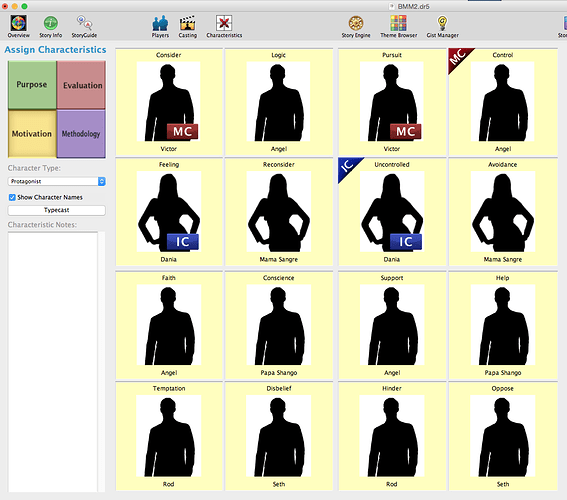Finally purchased Armando Saldaña-Mora’s Dramatica for Screenwriters and I’m using his recommended outline method, but I’m bumping on how to properly identify the MC and IC Crucial Elements.
In the software, does the Motivations Quad of the Characteristics Menu indicate the MC Crucial Element by putting a red MC triangle in the upper left-hand corner of that square and a blue IC triangle indicating the IC Crucial Element? I’ve attached a screen shot here where “Control” has the red MC triangle and “Uncontrolled” has the blue IC triangle. Or do these indicate something else?


 because I am trying to apply Dramatica from the books (the pdf documents I downloaded on this site last year). It is very easy to check that there, p 158 and 192-3, Phillips and Huntley clearly list Start and Stop examples for both Change and Steadfast characters.
because I am trying to apply Dramatica from the books (the pdf documents I downloaded on this site last year). It is very easy to check that there, p 158 and 192-3, Phillips and Huntley clearly list Start and Stop examples for both Change and Steadfast characters.